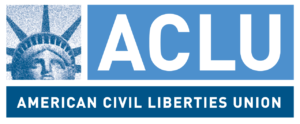Spokeo, Activist Courts, and Consumer and Debt Law
People involved in debt and consumer law have heard a lot about “Spokeo” in the past few years, and they’re going to hear more. Spokeo is a wolf in sheep’s clothing, a Supreme Court decision purporting to limit the Judicial system’s ability to override the functions of the other branches of government, but actually itself a vast usurpation of that power. It has been used to gut consumer and debt law protections enacted by Congress, and it will increasingly be used to do so. I expect it to be extended to state courts and jurisdiction as well.
So, what is “Spokeo” and how does it usurp legislative power? We discuss these issues and suggest some possible approaches in the following article.
“Spokeo” is the way many refer to a case and the Supreme Court decision that decided it. The case was Spokeo, Inc. v. Robins, 136 S. Ct. 1540 (2016). Spokeo, Inc. was a business that compiled information on essentially everybody and made it available to people searching it. Some of the information was free, and some was only available upon payment (not a distinction relevant to the case). It disseminated information on creditworthiness and lifestyle and general biographical information, and its reporting on creditworthiness (allegedly) brought it within the reach of the Fair Credit Reporting Act (FCRA).[1]
In the case of Robins (the plaintiff in the suit), Spokeo reported that he was in his mid-fifties, employed, affluent and married – all of which Robins alleged was false. Robins claimed the information had hurt his attempt to obtain employment. Robins brought suit under the FCRA.[2]
The Supreme Court held (essentially) that he had not alleged a “concrete, actual injury.” Probably every single person reading this article intuitively knows how false this holding was, in reality.
The Court based its analysis on Article III of the Constitution, which limits judicial action to actual “cases and controversies.” They pointed out a fundamental concept of the law, which is that courts are only empowered to hear cases involving real people with real adversary interests – otherwise people would make up cases to test abstract limits of the laws as a sort of judicial review. To keep the Judicial branch in its own lane, courts have determined that, to satisfy Article III, a plaintiff must show (1) injury in fact, (2) causation, and (3) redressability (ability of a court order to “solve” the wrong that has been committed. With respect to the injury requirement, the injury must be (1) “concrete and particularized” and (2) “actual or imminent.” A “bare procedural violation” of a statute is not enough: there must be some harm already, or some harm must be imminent.[3]
Article III’s “Standing” Requirement and the Federal Court’s Attack on Statutory Consumer Rights
To satisfy Article III, a plaintiff must show (1) injury in fact, (2) causation, and (3) redressability. With respect to the injury requirement, which the Supreme Court discussed at length in its seminal opinion in Spokeo, Inc. v. Robins, 136 S. Ct. 1540 (2016), the injury must be (1) “concrete and particularized” and (2) “actual or imminent.” A “bare procedural violation” of a statute is not enough.
All of these requirements are designed to insure that a litigant is protecting his or her own specific rights and not some theoretical general or public right which would be akin to judicial review.
In Spokeo, the Supreme Court seemed to take the position that the “harm” or injury Robins alleged was a procedural violation – like he was some purist offended by Spokeo’s carelessness in keeping information. The harm, however, was crystal clear and not at all theoretical or akin to judicial review: Spokeo had wrong information about Robins. Having and disseminating false information about him WAS the wrong, and it was also the very “harm” that the FCRA was designed to prevent. The fact that the incorrect information was also damaging to him was irrelevant to the Article III analysis, though of course it would be relevant to the amount of damages he should have gotten.
The Court was not unaware of this; its decision was a blatant attack upon civil and consumer rights, many of which are quite difficult to quantify and are intangible. The Court is hostile to these rights, and Spokeo was a usurpation of the legislature’s Constitutional power to create them and give people the right to enforce them. Thus it is a lasting monument to the hypocrisy of the current Supreme Court. There will likely be many more over the coming years. The Spokeo decision has been used to attack civil and consumer rights from the instant it was written, most notably, perhaps, the Telephone Consumer Protection Act (TCPA), but what will be the harm to a debt litigant under the FDCPA of the debt collector failing to publish warnings in conspicuous print if the consumer sees the warning anyway? What’s the harm of making harassing phone calls late at night? The Supreme Court has put itself in the business of evaluating and quantifying those harms, while the FDCPA made them per se violations. The courts will use Spokeo to attack the FDCPA as well.
State Law Applicability of Spokeo
Even a casual reading of Spokeo will reveal that the Court pretended to be careful to limit its ruling to federal courts. There is no doubt the state courts will follow, however. Note the reasoning, applicable to every state, in the following paragraph of a New York State opinion. I include the links so you can more conveniently track down the cited cases:
“Under the common law, there is little doubt that a `court has no inherent power to right a wrong unless thereby the civil, property or personal rights of the plaintiff in the action or the petitioner in the proceeding are affected'” (Society of Plastics Indus. v County of Suffolk, 77 NY2d 761, 772 [1991], quoting Schieffelin v Komfort, 212 NY 520, 530 [1914]). Related to this principle is “a general prohibition on one litigant raising the legal rights of another” (Society of Plastics, 77 NY2d at 773). Thus, if the issue of standing is raised, a party challenging governmental action must meet the threshold burden of establishing that it has suffered an “injury in fact” and that the injury it asserts “fall[s] within the zone of interests or concerns sought to be promoted or protected by the statutory provision under which the [government] has acted” (New York State Assn. of Nurse Anesthetists v Novello, 2 NY3d 207, 211 [2004]).[2] The injury-in-fact requirement necessitates a showing that the party has “an actual legal stake in the matter being adjudicated” and has suffered a cognizable harm (see Society of Plastics, 77 NY2d at 772) that is not “tenuous,” “ephemeral,” or “conjectural” but is sufficiently concrete and particularized to warrant judicial intervention (Novello, 2 NY3d at 214; see Spokeo, Inc. v Robins, 578 US __, __, 136 S Ct 1540, 1548 [2016]).
MENTAL HYGIENE v. Daniels, 33 NY 3d 44, 50 – (NY App. 2019).
What to Do
People familiar with my writing and videos will perhaps recognize that some of the language in Mental Hygiene is familiar. We argue the issue of standing all the time at a more basic level: a debt collector must show that it owns the right to sue – the injury in fact requirement is a constitutional necessity that the plaintiff show it owns the debt in question. Provided you dispute the debt collector’s ownership, which I have said every defendant should do in every case.
If you are alleging a violation of the FDCPA or the FCRA, you must obviously take some care to allege actual harm closely connected to the right you claim was violated. If they are suing you for debt beyond the statute of limitations, their unfair collection practice has caused you emotional distress, the expense of hiring a lawyer or seeking help, the time reading, thinking about and responding to the suit, the price of paper in filing your answer or responsive motion, postage incurred in providing notice to the debt collector, gas in taking the suit to be filed, and whatever else you can think of.
The courts are extremely aggressive in TCPA litigation, where they have held that “a single emailed fax” was not a cognizable harm even though Congress said it was, and even though even a single emailed fax would require some time to read and elicit some emotional response. If ONE emailed fax isn’t enough despite the fact that Congress made it so, then what about two? Or twenty-two? Expect the courts to apply this type of analysis routinely, and state your damages in as lurid and concrete a fashion possible.
Many state consumer protection laws are subject to what is called “strict liability” and do not require any harm at all – even a mere “technical” violation creates liability. The Supreme Court is willing to recognize that a trespasser, by stepping one foot across the line, has caused cognizable damage even though it may not be seen, felt, or even exist at all – it’s a legal wrong (to a property interest most often held by the wealthy). Will it see deceptive sales language that did not deceive a consumer as a violation in the same way? I believe a careful litigant should consider alleging shock and outrage, perhaps a call to a lawyer or at least photocopying expense – something, anything – to show actual harm until some theoretical limitation has been placed on the courts’ “discretion” to reconsider and reevaluate damages determined by the legislature. Spokeo abandoned the principle of Judicial limitation.
[1] Among other things, the FCRA states that “[a]ny person who willfully fails to comply with any requirement [of the Act] with respect to any [individual] is liable to that [individual]” for, among other things, either “actual damages” or statutory damages of $100 to $1,000 per violation, costs of the action and attorney’s fees, and possibly punitive damages. § 1681n(a).
[2]Apparenty Robins did not dispute his “report” (and perhaps he couldn’t because of the nature of Spokeo) and sue under the provisions provided by that. Instead, he seems to have alleged a failure of Spokeo to use the required care to obtain information. This may have been a litigation decision based on the attempt to bring the claim as a class action, which requires “commonality” of legal issues among the class members. If so, it was the wrong decision for Robins’s individual chances, as it turned out.
[3] “Imminence” has created some interesting legal issues not important here. The courts have held that an enacted law may create imminent harm, but they have also held that where the executive has renounced enforcement of the law, the harm is not imminent.



